9 December, 2001
Today, the team took terrestrial samples from the helo pad(where the helicopters take off and land). Once we have identified the site to be sampled, a photograph is taken of the site. Notes are made regarding such things as vegetation coverage, snow and ice coverage, and evidence of physical disturbance. We collected more than 50 samples from the helo pad. These samples will be shipped back to Texas A&M University in College Station, Texas where GERG(Geochemical & Enviornmental Research Group)will analyze them for various pollutants.
We did have a bit of excitement. While we were doing our sampling, we noticed an oil leak in one of the fuel lines. We immediately notified the proper department and the fire department responded within minutes.
Question of the day: Same as yesterday. I'm still waiting for a correct answer. I'll give you one more day.
The question was, Since McMurdo is our primary site for evaluating the environment, Why are sampling remote sites away from McMurdo?
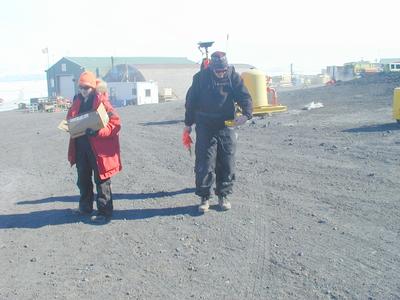
1. Andrew Klein using the GPS(Global Positioning System) apparatus to locate the next position to be sampled.
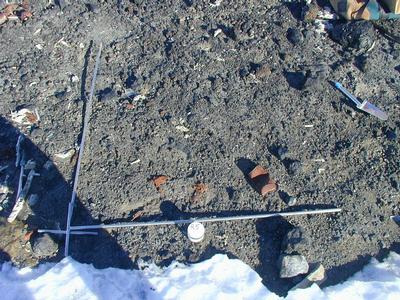
2. Once located the site is marked and a picture taken. a permafrost depth is also determined.
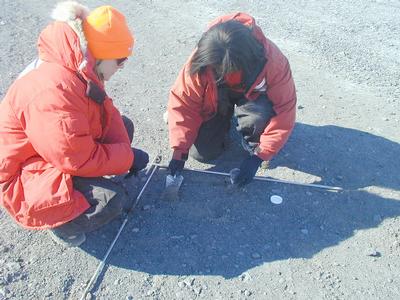
3. collecting samples. These soil samples will be tested for pollutants. More on what those pollutants are later.
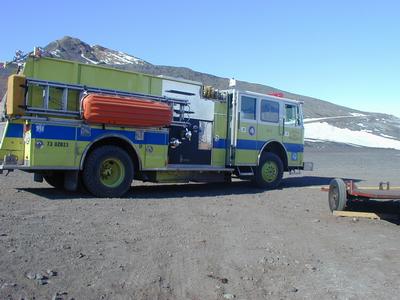
4. Fire truck responding to the oil leak we found.
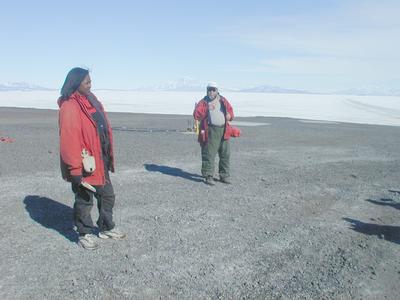
5. outside sampling on the helo pad. Todays temp: +3 C, +38 F; with wind chill +1 C, +34 F
Contact the TEA in the field at
.
If you cannot connect through your browser, copy the
TEA's e-mail address in the "To:" line of
your favorite e-mail package.
|
